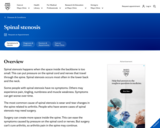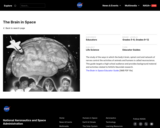
This interactive explores how neurons communicate using action potentials.
- Subject:
- Biology
- Science
- Material Type:
- Interactive
- Provider:
- LabXchange
- Provider Set:
- LabXchange Interactives
- Date Added:
- 12/18/2020

This interactive explores how neurons communicate using action potentials.

Biology 2e is designed to cover the scope and sequence requirements of a typical two-semester biology course for science majors. The text provides comprehensive coverage of foundational research and core biology concepts through an evolutionary lens. Biology includes rich features that engage students in scientific inquiry, highlight careers in the biological sciences, and offer everyday applications. The book also includes various types of practice and homework questions that help students understand—and apply—key concepts. The 2nd edition has been revised to incorporate clearer, more current, and more dynamic explanations, while maintaining the same organization as the first edition. Art and illustrations have been substantially improved, and the textbook features additional assessments and related resources.


By the end of this section, you will be able to do the following:
Identify the spinal cord, cerebral lobes, and other brain areas on a diagram of the brain
Describe the basic functions of the spinal cord, cerebral lobes, and other brain areas

Describes the different parts of the nervous system and how it is organized.

Students build small-sized prototypes of mountain rescue litters rescue baskets for use in hard-to-get-to places, such as mountainous terrain to evacuate an injured person (modeled by a potato) from the backcountry. Groups design their litters within constraints: they must be stable, lightweight, low-cost, portable and quick to assemble. Students demonstrate their designs in a timed test during which they assemble the litter and transport the rescued person (potato) over a set distance.

This site from the MayoClinic.com provides a great look at the acute inflammation of the brain caused by a viral infection known as encephalitis. Sections in the article include: signs and symptoms, causes, screening, treatment, prevention, and more.

Article about spinal stenosis and how it relates to spinal nerves.

This educators guide shows students how the body's brain, spinal cord and network of nerves control the activities of animals and humans.

This lesson describes the function and components of the human nervous system. It helps students understand the purpose of our brain, spinal cord, nerves and the five senses. How the nervous system is affected during spaceflight is also discussed in this lesson.

Psychology is designed to meet scope and sequence requirements for the single-semester introduction to psychology course. The book offers a comprehensive treatment of core concepts, grounded in both classic studies and current and emerging research. The text also includes coverage of the DSM-5 in examinations of psychological disorders. Psychology incorporates discussions that reflect the diversity within the discipline, as well as the diversity of cultures and communities across the globe.Senior Contributing AuthorsRose M. Spielman, Formerly of Quinnipiac UniversityContributing AuthorsKathryn Dumper, Bainbridge State CollegeWilliam Jenkins, Mercer UniversityArlene Lacombe, Saint Joseph's UniversityMarilyn Lovett, Livingstone CollegeMarion Perlmutter, University of Michigan



By the end of this section, you will be able to:
Explain the functions of the spinal cord
Identify the hemispheres and lobes of the brain
Describe the types of techniques available to clinicians and researchers to image or scan the brain

Created for all students and teachers who would like to learn more about the nervous system, this extensive University of Washington site offers information, resources, games, and activities galore. Offers dozens of links to related sites.